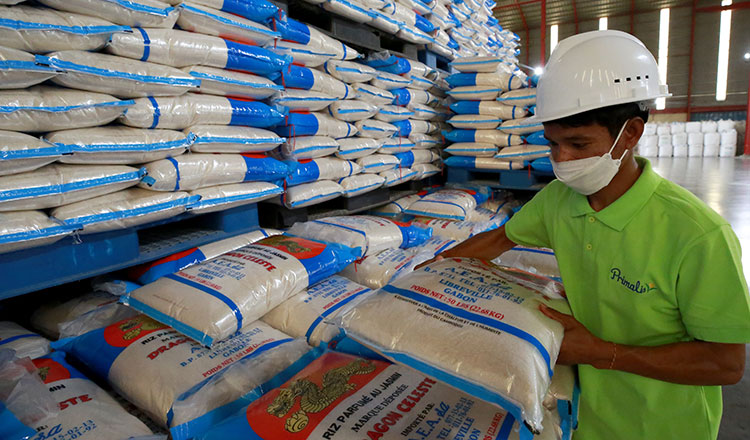Tags
Agro-processing sector snowballing, Vanndy says
James Whitehead / Khmer Times

The Cambodian agro-processing sector is growing in leaps and bounds in recent periods, and playing a critical role in enhancing the value of Cambodia’s rice and agricultural production sectors, said Hem Vanndy, Minister of Industry, Science, Technology & Innovation (MISTI).
Speaking at the ‘7th Cambodia Rice Forum 2024’, Vanndy said that Cambodia is now home to 19 large-scale rice processing factories with a sum investment value of close to $342.30 million.
The nation also boasts 19,570 small and medium-sized rice processing mills, representing a sum investment of around $111.7 million.
With this agro-processing infrastructure in place, he said that the Royal Government of Cambodia (RGC) is well on track to boost national rice exports to 1 million tonnes by 2025, with an annual growth target of 3 to 5 percent per year thereafter.
The minister also confirmed Cambodia’s commitment to advancing the rice sector through research and innovation, collaboration, as well as championing sustainable practices, to ensure the global competitiveness of Cambodian rice continues to improve.
Such measures will ensure that the staple crop remains a consistently growing income for the nation’s farmers and economy at large, he explained.
He said that improved processing and innovation within the sector will ensure the creation of end products that deliver greater value to all parts of the agricultural value chain.
To continue to buoy the industry, however, Vanndy called for continued investment in critical infrastructure such as transportation, logistics, storage facilities, and more processing plants.
Such infrastructure is able to significantly enhance the value of rice products, and allow producers to explore both large-scale and niche market opportunities.
Citing MISTI’s Agricultural Technology Roadmap 2022, the minister stressed the need for the agricultural sector to adopt environmentally friendly farming practices, as well as modern agricultural technologies.
These practices not only improve yield but also contribute to sustainability, he said, which he noted is an increasing concern for global consumers.
The Rice Federation of Cambodia (RFC) recently reported that Cambodia exported 412,023 tonnes of milled rice to 65 international markets in the first eight months of 2024.
These exports represented a sum value at $305 million.
According to the Federation’s findings, the EU remains the largest importer of Cambodian rice products, importing 208,023 tonnes in the survey period, valued at 161 million.
In the same period, ASEAN nations purchased 83,095 tonnes for close to $56 million; and China imported 77,792 tonnes, worth $48 million.
In addition to staple exports like rice, other Cambodian agricultural products have witnessed improved demand in recent periods, stimulating new trade incomes.
According to a mid-year report by the Ministry of Agriculture, Forestry, and Fisheries (MAFF), Cambodia’s total agricultural exports experienced a boom in 2024.
The report detailed that in the first half of 2024, Cambodia exported over 6 million tonnes of agricultural products, an impressive 60 percent jump compared to the first six months of 2023.
These agricultural products reached 77 target markets worldwide, according to MAFF’s findings, and represent the strongest rise in output in the last five years.
94 percent of the products were exported to primary markets, including China, Vietnam, and Thailand.
China primarily imported bananas, rice, cassava, mango, and lentils; Vietnam imported cashews, cassava, and fresh mango; and Thailand imported cassava, fresh mango, pepper, and bran from Cambodia.
Rice exports alone were valued at over $400 million, noted the MAFF report; while the combined value of non-rice agricultural products and rice exports exceeded $1.8 billion.
The report noted that raw cashew nuts contributed significantly to the latest export values, generating more than $800 million, close to one-third of the total value of all the nation’s agricultural exports.
Cassava is also becoming a stand-out performer, witnessing exports of over 2.5 million tonnes in the survey period, valued at over $450 million.
This result makes cassava the highest-growing export driver among the Kingdom’s major agricultural products.
https://www.khmertimeskh.com/501558172/agro-processing-sector-snowballing-vanndy-says/Published Date: September 13, 2024






